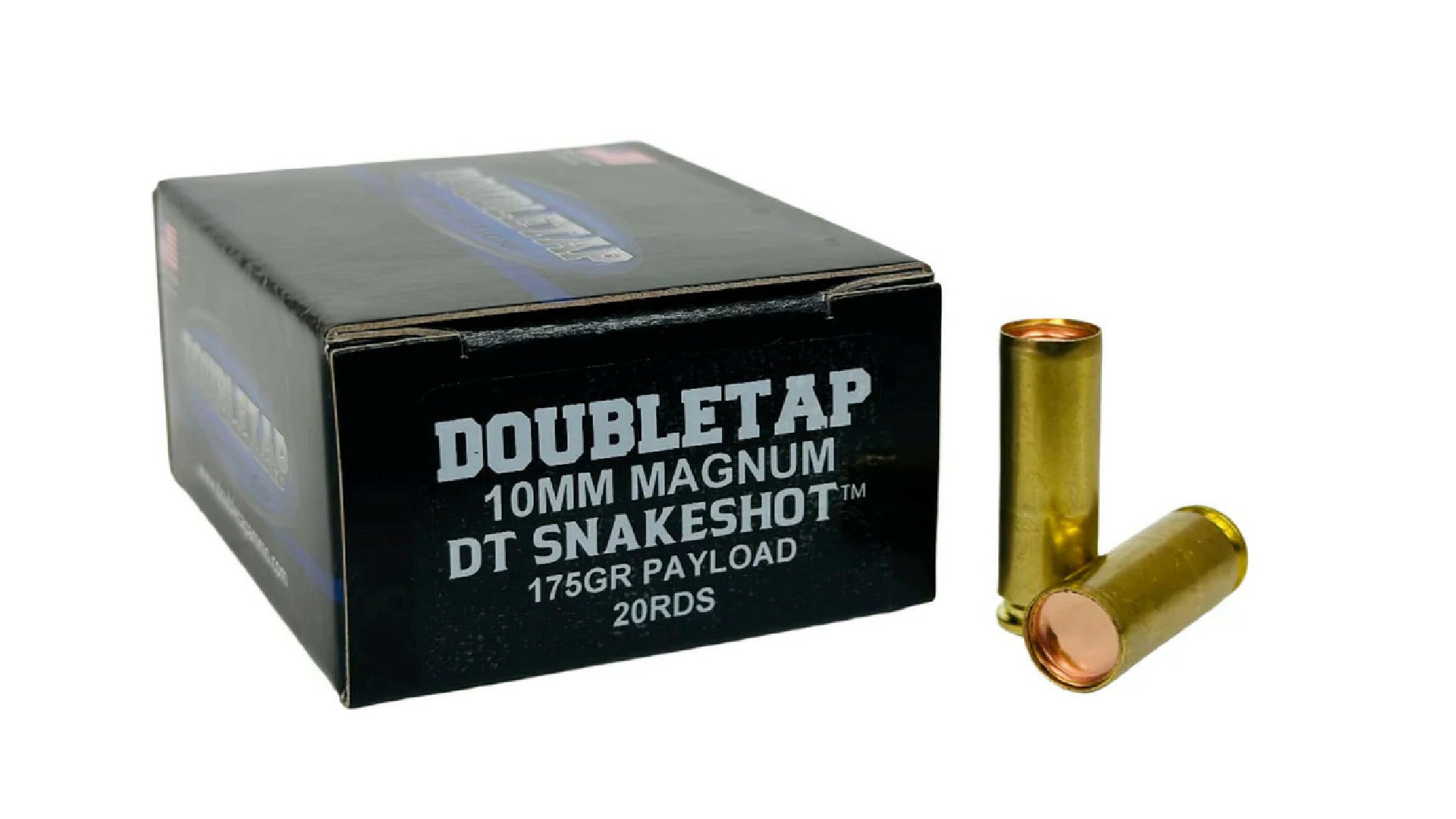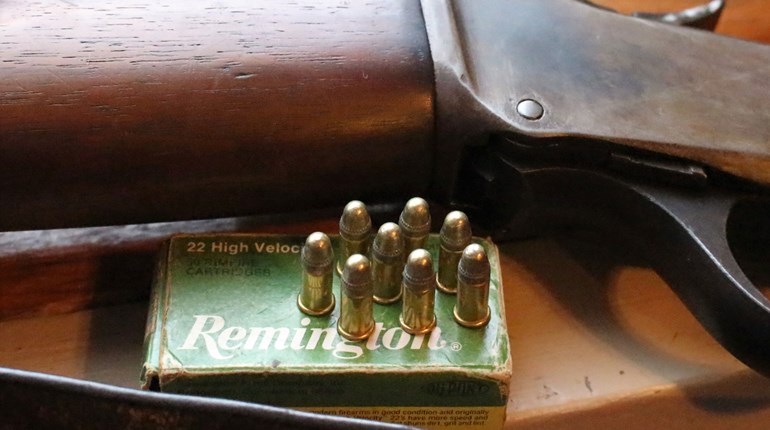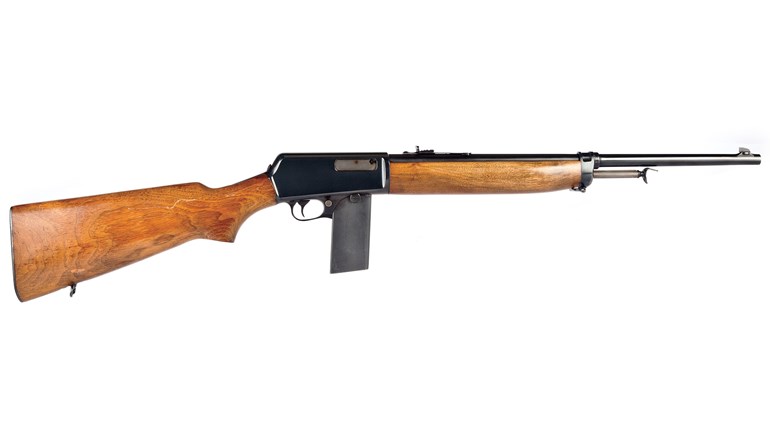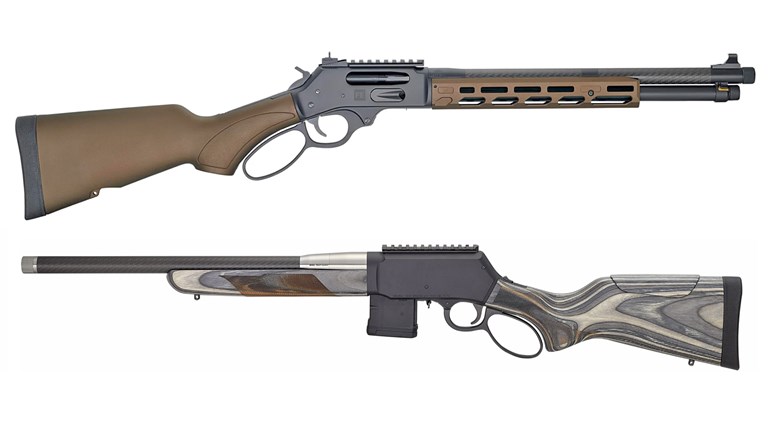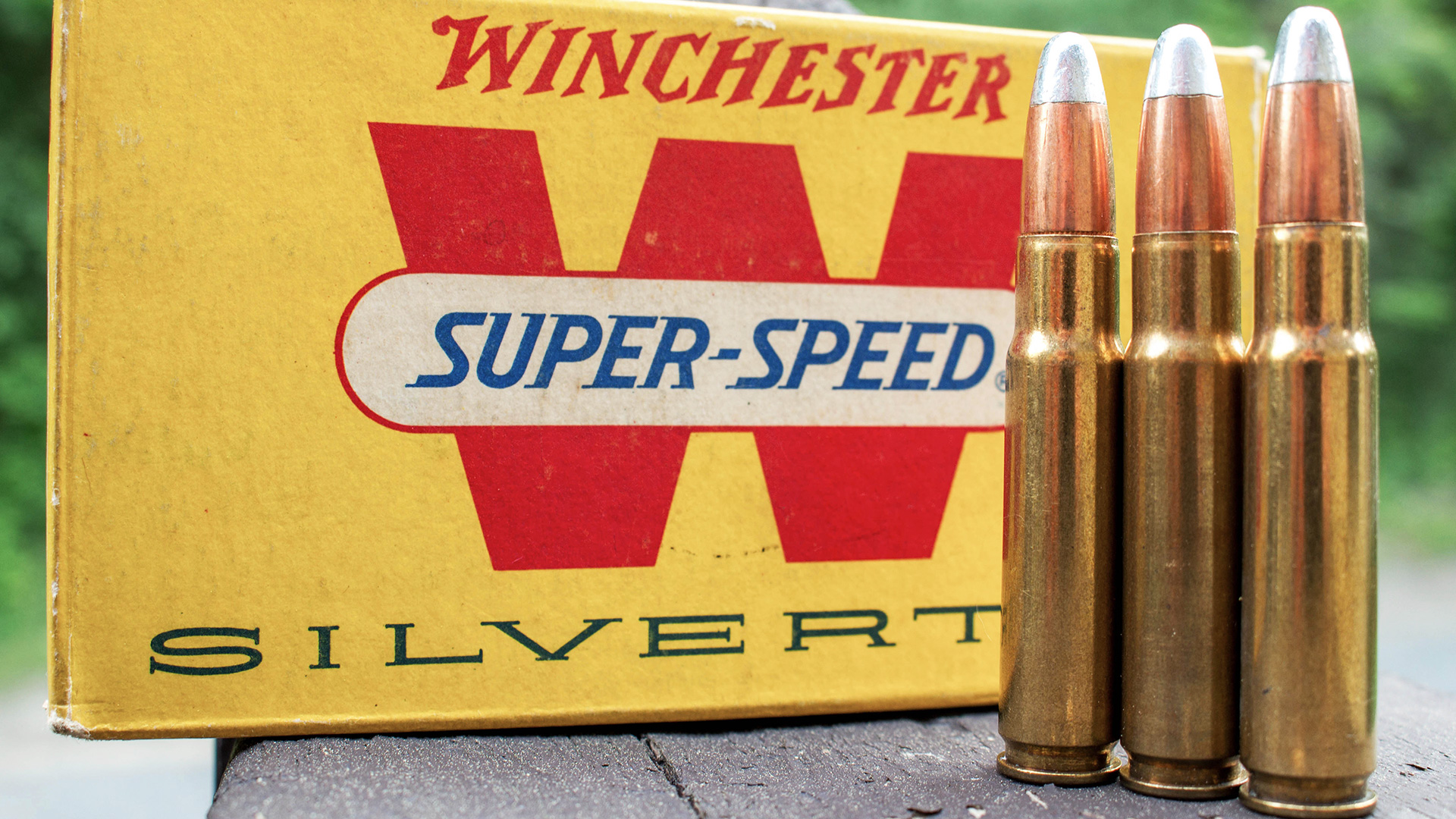
Americans have had a long love affair with .35-caliber cartridges, going so far back as the rimmed .35 Winchester of 1903, the .35 Remington of 1906 and one of the longest-running wildcats—the .35 Whelen of 1922, legitimized by Remington over six decades later. John Rigby & Co. released their .350 Rigby Magnum, and Norma brought the potent .358 Norma Magnum out in 1959.

Building on the near-instant success of the .308 Winchester—introduced in 1952—Winchester released a pair of cartridges based on that excellent case in 1955: the .243 Winchester and the .358 Winchester. While the former is the .308 Winchester case necked down to hold 6mm (.243-inch-diameter) bullets, the latter mates the case with the .358-inch-diameter slugs of the earlier .35s. It was released in the world-famous Model 70 bolt-action rifle, and the following year in the Model 88 lever-action rifle, and would soon be chambered in the Savage Model 99F lever gun as well.
The .358 Winchester shares a good number of the dimensional attributes of the .308 Winchester, including the .473-inch-diameter case head (actually hearkening back to the 7x57mm Mauser, if through the .30-06 Springfield), case length of 2.018 inches, and the 20-degree shoulder which is used for headspacing. The .358 Winchester’s cartridge overall length is slightly shorter than that of the .308 Winchester, measuring 2.78 inches, maximum. The rifles so chambered were equipped with a 1:12-inch twist rate, allowing the proper stabilization of bullets as heavy as 250 grains. Winchester’s original ammunition offerings were comprised of a 200-grain bullet at 2530 fps, generating 2,840 ft.-lbs., and a 250-grain bullet at 2250 fps, for 2,810 ft.-lbs.

At the time, the .35 Winchester had been discontinued for nearly two decades, the .350 Rigby Magnum had faded into obscurity and the .358 Norma Magnum would see daylight for another four years, nor the .358 Norma Magnum for a decade. This left the .35 Remington (ironically popular in lever guns, though developed for an autoloader) as the only other popular .35-caliber in production, and the .358 Winchester offered a considerable advantage in the hunting fields. In fact, many considered the .358 Winchester in the Model 88 lever gun to be the direct replacement for the .348 Winchester in the Model 71 rifle, as the newer, rimless design offered a similar performance in a smaller package, which also offered the option of using spitzer bullets as the Model 88 used a detachable magazine.
Many gunwriters of the era—including Elmer Keith—found the new .358 Winchester to be a good woods cartridge. To paraphrase Keith’s quote, he said you could “eat right up to the bullet hole,” or words to that effect, pointing to the lack of bloodshot meat, presumable from the moderate velocity. I do agree with Keith’s sentiment in that the .358 Winchester does not destroy edible meat like a .270 Winchester or .300 Winchester can, and that there is some merit to the heavy-and-slow mind set, especially if the vast majority of your hunting is done inside of 200 yards. While the .358 Winchester garnered a decent following early on, it seems that the Winchester Magnum series released in the late 1950s and early 1960s had a profoundly negative effect on the .358.
By the mid ‘60s, Winchester had dropped the .358 Winchester in the Model 88, in favor of the newer and speedier .284 Winchester; speed was taking over. But there were those who hung on to their .358s, quietly taking the short, fat, little gem into the timber each season, with much success. Considering that at the same time, the .45-70 Government was all but gone from the market, it’s not surprising that a slow medium bore lost its shine.

Where the 250-grain bullet makes perfect sense to, if used at close quarters, it didn’t appeal to the hunting community of the late 1950s, and was soon dropped, leaving the 200-grain load to serve. This remains the case to this day, where the most readily available loads from Winchester, Hornady and Buffalo Bore all use a 200-grain softpoint spitzer. Looking at the trajectory of the common 200-grain load—the modern stuff running between 2475 and 2490 fps—you can easily use a 200-yard zero, seeing a mid-range rise of just under 3 inches, and you’ll be looking at about a foot of drop at 300 yards, where that bullet will still retain over 1,200 ft.-lbs. of energy. Does a 200-grain .35-caliber bullet possess the best of sectional density values? This bullet comes with an S.D. value of .223, so it isn’t heavy-for-caliber by any means, but for deer and black bear it should so just fine. Should you want a bit more, Buffalo Bore—who has been fueling more than a few obscure rifles of late—offers a 225-grain Barnes TSX and 225-grain Sierra spitzer boattail at 2500 fps and 2525 fps, respectively, in their Supercharged line. If you were considering using your .358 Winchester for elk, moose and other large species, I’d definitely consider these loads.
Should you want the most versatility from your 3.58 Winchester, handloading is the best avenue to have a healthy supply of ammunition on hand. If you have a good set of dies, making brass cases from plentiful .308 Winchester isn’t a difficult proposition, and there is a wonderful selection of .358-inch-diameter bullets, including lead-free choices, as well as round-nose, spitzer, and polymer-tipped choices. Powders like IMR4064, VARGET and RL15 can be useful in a number of applications, and the case is easily sparked with a standard large rifle primer.

Considering that the .358 Winchester didn’t really get all that far off the ground, you may be surprised to find that there are a couple of options for this cartridge in new production rifles. Bill Wilson’s NULA Model 20 lightweight rifle is currently chambered in .358 Winchester, and Browning, up until very recently, made their excellent BLR in .358 Winchester; you may still find some new rifles in stock. Scouring the used the used gun racks, it shouldn’t be difficult to locate an old Winchester 70 to 88, or even Savage 99 or Ruger M77 hanging about, looking for a date. And while factory ammo choices may not be the most plentiful, if a good old 358 Winchester tickles your fancy, there are enough choices to keep your rifle in business. I've always thought a .358 Winchester with 250-grain slugs might rank among the top baited-bear cartridges, especially as it can be housed in a short-barreled, compact rifle, with plenty of punch.
Looking for previous installments of our "Behind the Bullet" series? We've got you covered.
• .318 Westley Richards
• .35 Remington
• .405 Winchester
• .350 Remington Magnum
• 400 Legend
• .17 Winchester Super Magnum
• 350 Legend
• .303 British
• 26 Nosler
• 6mm Remington
• .270 Winchester Short Magnum
• 360 Buckhammer
• 30 Nosler
• 7-30 Waters
• .370 Sako Magnum
• .17 HMR
• 6.5 Weatherby RPM
• .327 Federal Magnum
• .450 Bushmaster
• 7mm PRC
• .275 Rigby
• .340 Weatherby Magnum
• .416 Ruger
• 27 Nosler
• .257 Roberts
• 7mm Weatherby Magnum
• .300 PRC
• .350 Rigby Magnum
• .450 Nitro Express
• .17 Hornet
• 7mm STW
• 6.8 Western
• .375 Ruger
• .223 Remington
• 6.5x55 Swedish
• .416 Remington Magnum
• .300 Winchester Short Magnum
• 28 Nosler
• 6.5 PRC
• .22 WMR
• .458 Winchester Magnum
• .22 Hornet
• .280 Ackley Improved
• .240 Weatherby Magnum
• .458 Lott
• .264 Winchester Magnum
• .348 Winchester
• 33 Nosler
• .260 Remington
• .30-30 Winchester
• .416 Rigby
• .358 Norma Magnum
• .22 LR
• 7mm-08 Remington
• 8mm Remington Magnum
• .338 Federal
• .224 Valkyrie
• .338-06 A-Square
• 9.3x62mm Mauser
• .257 Weatherby Magnum
• .45-70 Government
• .300 H&H Magnum
• .25-06 Remington
• .30-06 Springfield
• 6.5 Creedmoor
• .300 Remington Ultra Magnum
• 7mm Remington Magnum
• .470 Nitro Express
• .280 Remington
• .300 Winchester Magnum
• .270 Winchester
• .222 Remington
• .45 ACP
• .404 Jeffery
• .44 Remington Magnum
• .41 Remington Magnum
• .243 Winchester
• .338 Winchester Magnum
• .357 S&W Magnum
• 6.5-284 Norma
• 8x57 Mauser
• .38 Smith & Wesson Special
• 7x57mm Mauser
• 9mm Luger
• .35 Whelen
• .454 Casull
• .375 H&H Magnum
• .45 Colt
• .22-250 Remington
• 10mm Auto
• .308 Winchester










